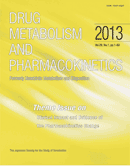Volume 28, Issue 3
Displaying 1-16 of 16 articles from this issue
- |<
- <
- 1
- >
- >|
Editorial
-
2013 Volume 28 Issue 3 Pages 177
Published: 2013
Released on J-STAGE: June 25, 2013
Download PDF (36K)
Regular Articles
-
2013 Volume 28 Issue 3 Pages 178-186
Published: 2013
Released on J-STAGE: June 25, 2013
Advance online publication: September 18, 2012Download PDF (1469K) -
2013 Volume 28 Issue 3 Pages 187-195
Published: 2013
Released on J-STAGE: June 25, 2013
Advance online publication: September 11, 2012Download PDF (381K) -
2013 Volume 28 Issue 3 Pages 196-202
Published: 2013
Released on J-STAGE: June 25, 2013
Advance online publication: September 25, 2012Download PDF (370K) -
2013 Volume 28 Issue 3 Pages 203-212
Published: 2013
Released on J-STAGE: June 25, 2013
Advance online publication: October 23, 2012Download PDF (2940K) -
2013 Volume 28 Issue 3 Pages 213-219
Published: 2013
Released on J-STAGE: June 25, 2013
Advance online publication: November 13, 2012Download PDF (1202K) -
2013 Volume 28 Issue 3 Pages 220-228
Published: 2013
Released on J-STAGE: June 25, 2013
Advance online publication: December 11, 2012Download PDF (1761K) -
2013 Volume 28 Issue 3 Pages 229-238
Published: 2013
Released on J-STAGE: June 25, 2013
Advance online publication: December 18, 2012Download PDF (1915K) -
2013 Volume 28 Issue 3 Pages 239-243
Published: 2013
Released on J-STAGE: June 25, 2013
Advance online publication: December 18, 2012Download PDF (250K) -
2013 Volume 28 Issue 3 Pages 244-249
Published: 2013
Released on J-STAGE: June 25, 2013
Advance online publication: December 25, 2012Download PDF (676K) -
2013 Volume 28 Issue 3 Pages 250-259
Published: 2013
Released on J-STAGE: June 25, 2013
Advance online publication: January 01, 2013Download PDF (3542K)
Notes
-
2013 Volume 28 Issue 3 Pages 260-264
Published: 2013
Released on J-STAGE: June 25, 2013
Advance online publication: October 23, 2012Download PDF (562K) -
2013 Volume 28 Issue 3 Pages 265-268
Published: 2013
Released on J-STAGE: June 25, 2013
Advance online publication: December 11, 2012Download PDF (439K) -
2013 Volume 28 Issue 3 Pages 269-273
Published: 2013
Released on J-STAGE: June 25, 2013
Advance online publication: January 29, 2013Download PDF (978K)
Short Communication
-
2013 Volume 28 Issue 3 Pages 274-277
Published: 2013
Released on J-STAGE: June 25, 2013
Advance online publication: November 13, 2012Download PDF (128K)
SNP Communication
-
2013 Volume 28 Issue 3 Pages 278-288
Published: 2013
Released on J-STAGE: June 25, 2013
Advance online publication: December 25, 2012Download PDF (1271K)
- |<
- <
- 1
- >
- >|
